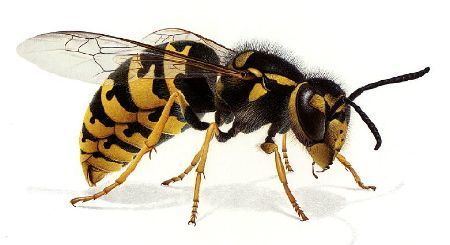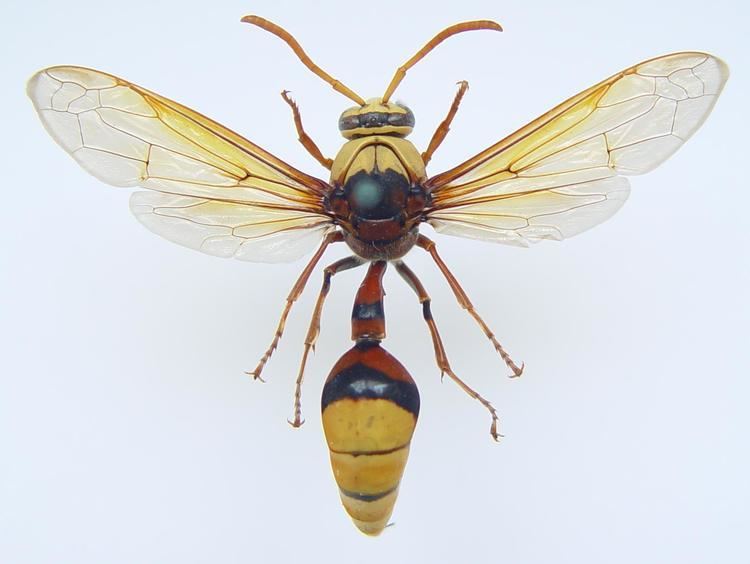Higher classification Vespoidea | Suborder Apocrita Scientific name Vespidae Rank Family | |
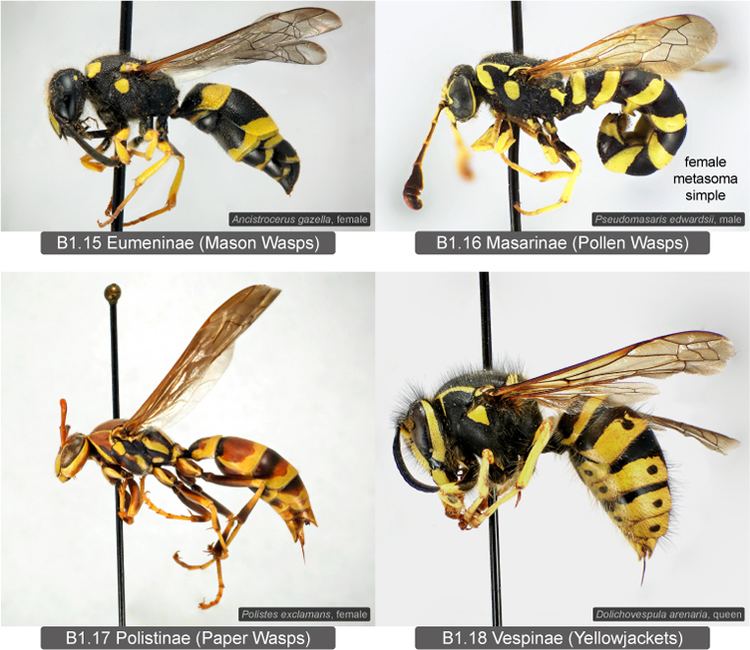 | ||
Speed Asian giant hornet: 40 km/h Wingspan Asian giant hornet: 7.6 cm Length European hornet: 1.8 – 2.4 cm, Asian giant hornet: 5 cm, Asian predatory wasp: 2 cm Lower classifications | ||
German yellowjacket vespidae vespula germanica grooming
The Vespidae are a large (nearly 5000 species), diverse, cosmopolitan family of wasps, including nearly all the known eusocial wasps (such as Polistes fuscatus, Polistes annularis, and Vespula germanica) and many solitary wasps. Each social wasp colony includes a queen and a number of female workers with varying degrees of sterility relative to the queen. In temperate social species, colonies usually only last one year, dying at the onset of winter. New queens and males (drones) are produced towards the end of the summer, and after mating, the queens hibernate over winter in cracks or other sheltered locations. The nests of most species are constructed out of mud, but polistines and vespines use plant fibers, chewed to form a sort of paper (also true of some stenogastrines). Many species are pollen vectors contributing to the pollination of several plants, being potential or even effective pollinators, while others are notable predators of pest insect species.
Contents
- German yellowjacket vespidae vespula germanica grooming
- Polybia sp black wasps in nest colony vespidae polistinae ninho de vespas
- References
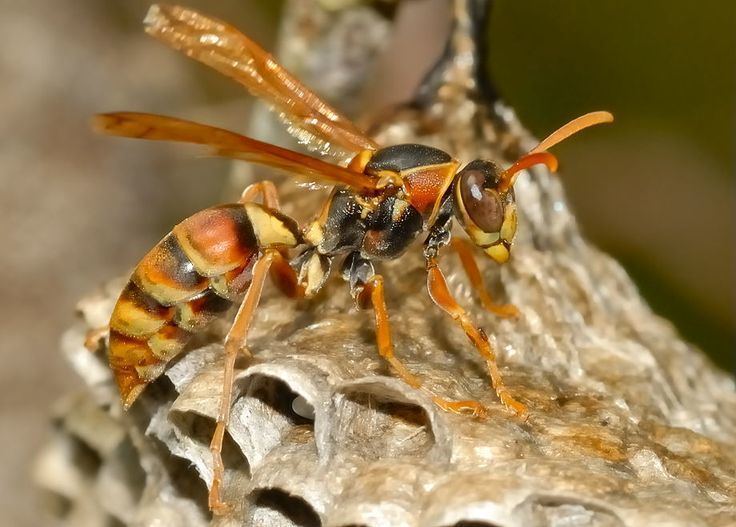
The subfamilies Polistinae and Vespinae are composed solely of eusocial species, while the Eumeninae, Euparagiinae, and Masarinae are all solitary; the Stenogastrinae subfamily contains a variety of forms from solitary to social.
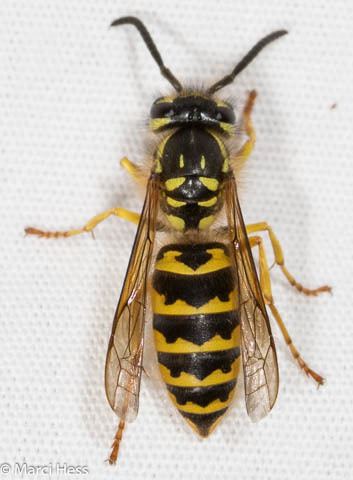
In the Polistinae and Vespinae, rather than consuming prey directly, prey are masticated and fed to the larvae, and in return, produce a clear liquid (with high amino acid content) which the adults consume; the exact amino acid composition varies considerably among species, but it is considered to contribute substantially to adult nutrition.

Polybia sp black wasps in nest colony vespidae polistinae ninho de vespas
